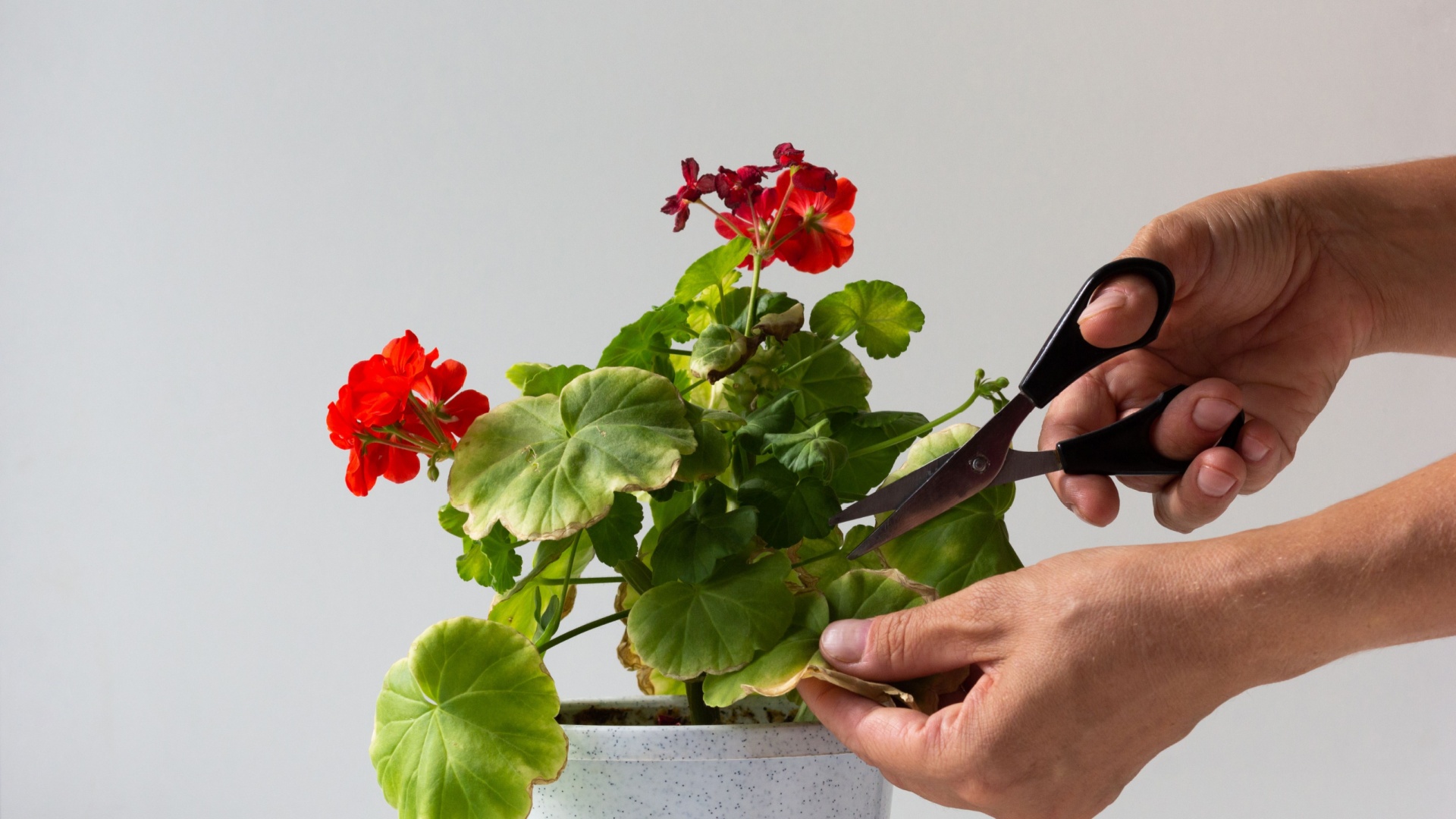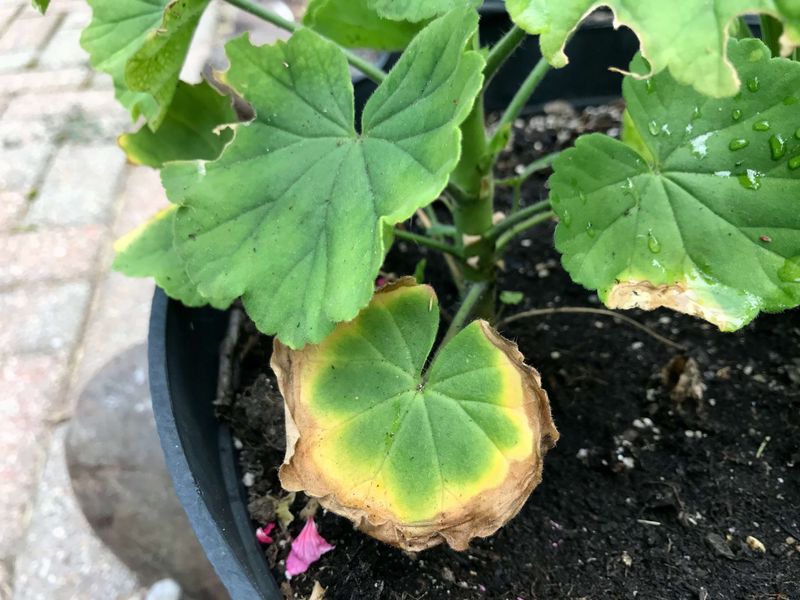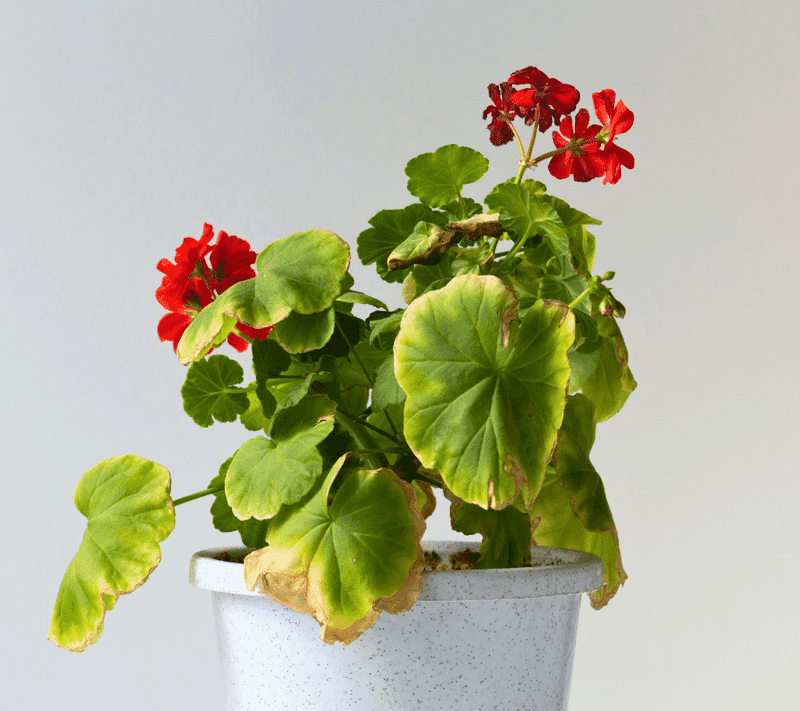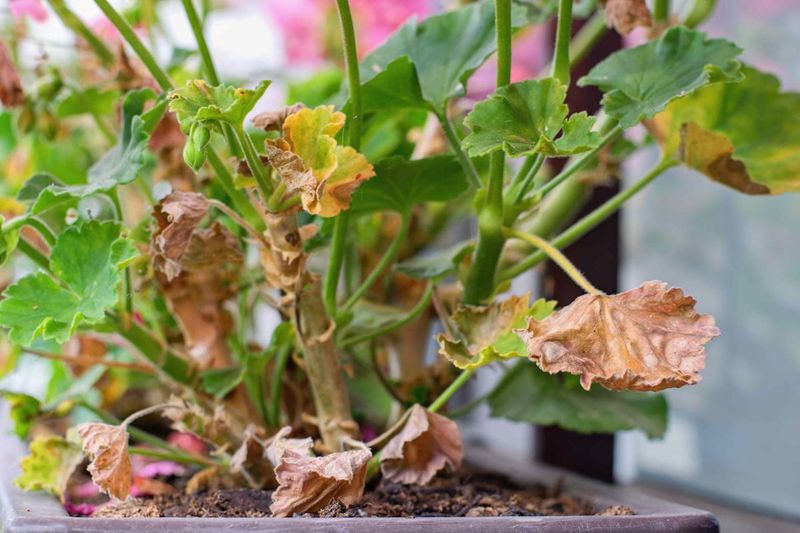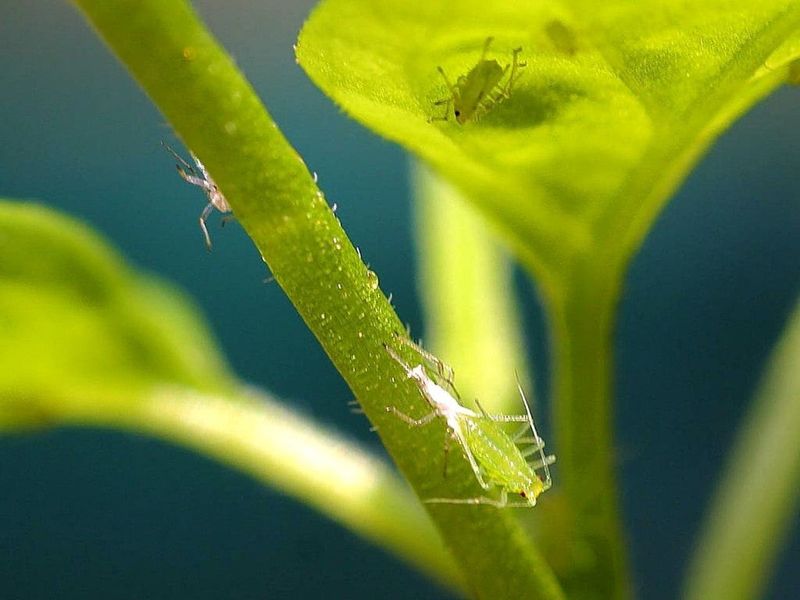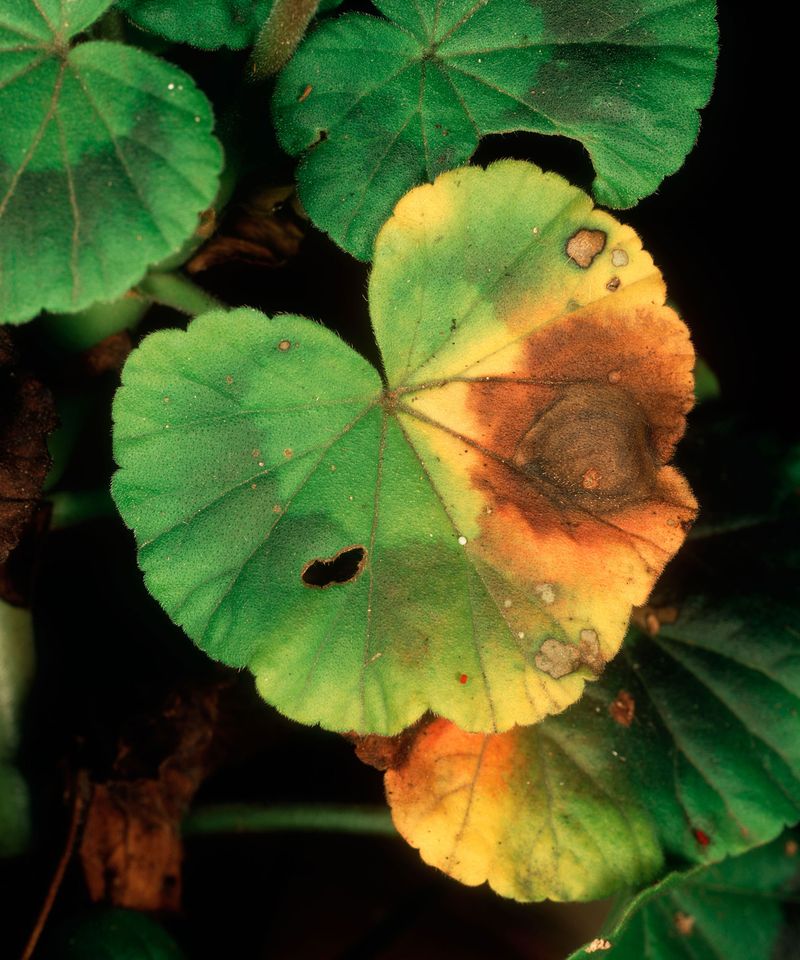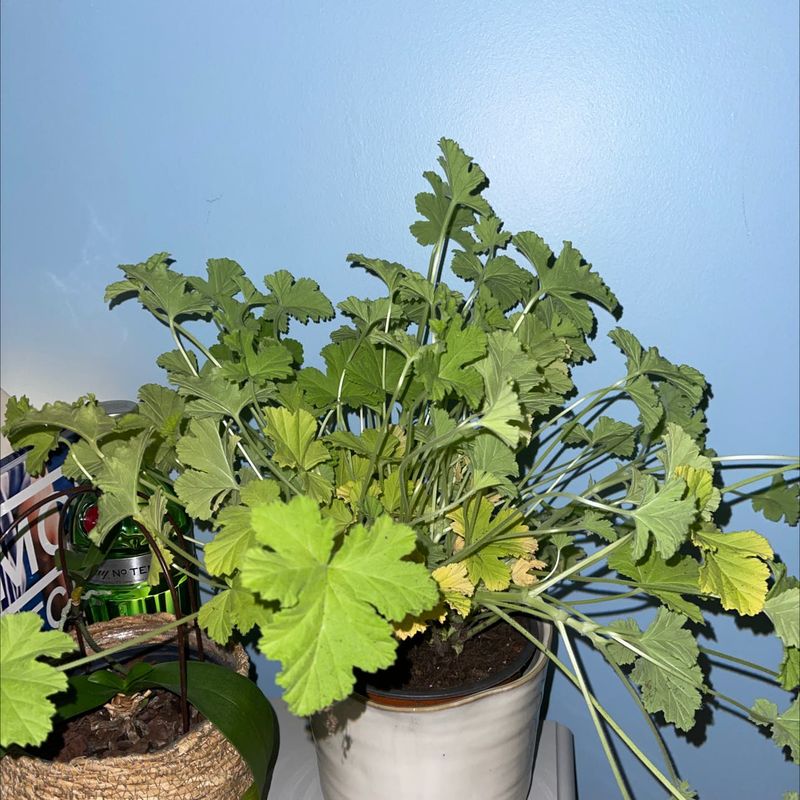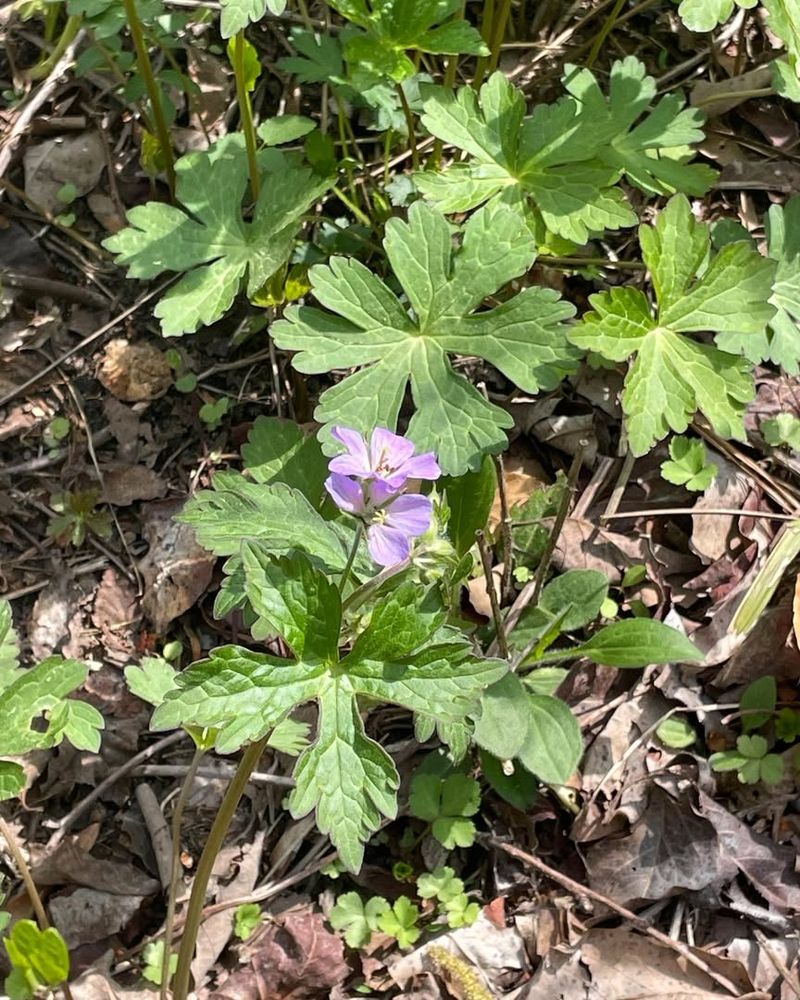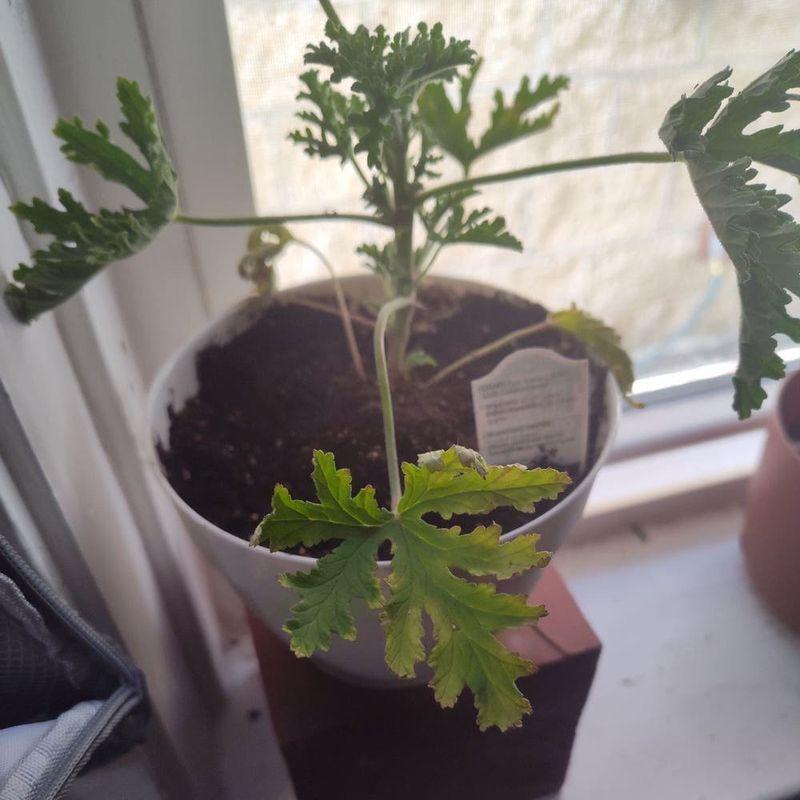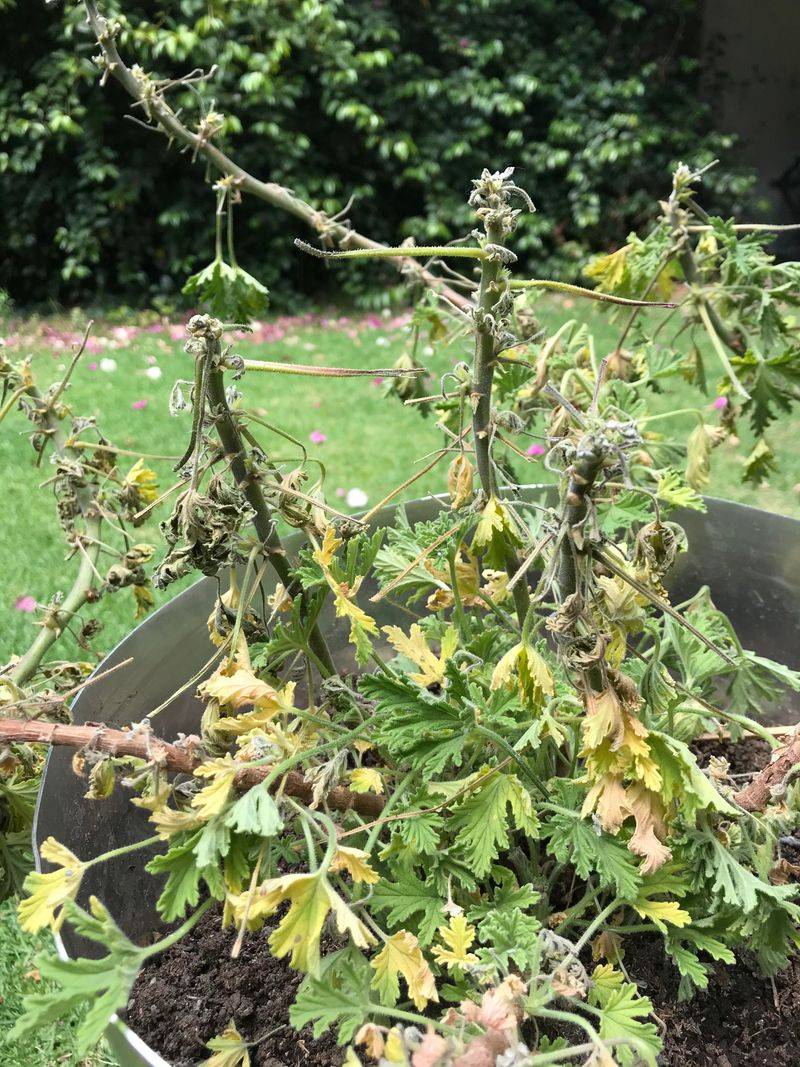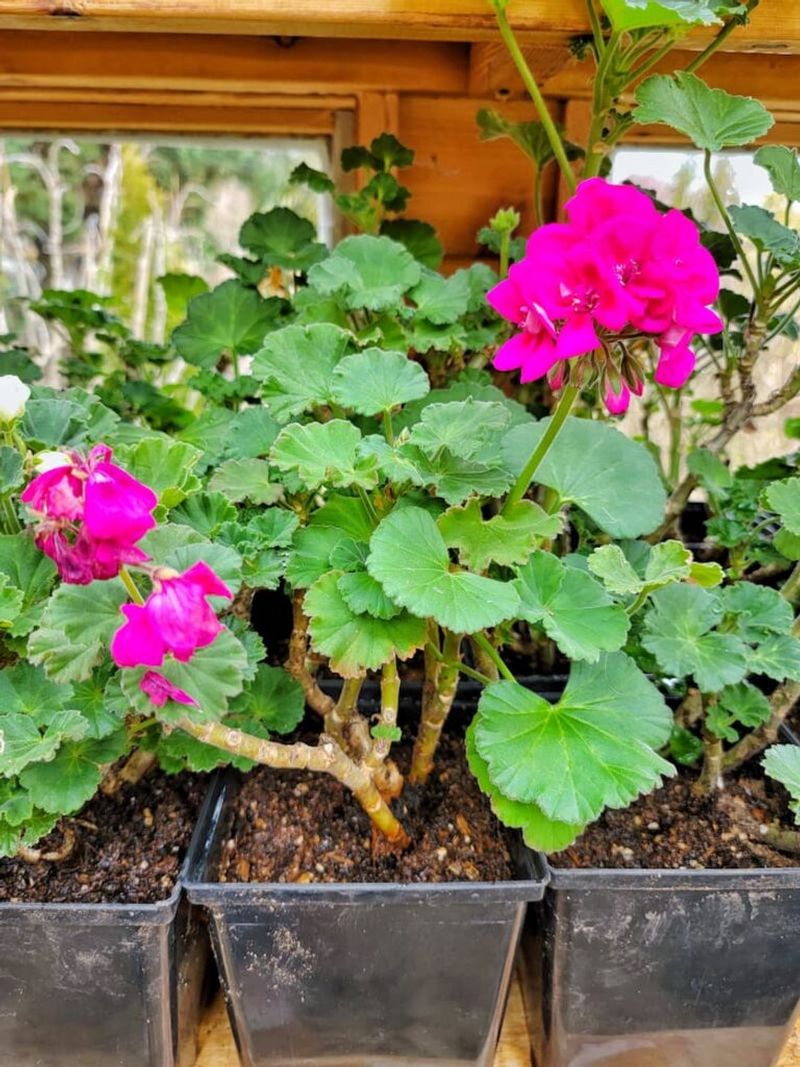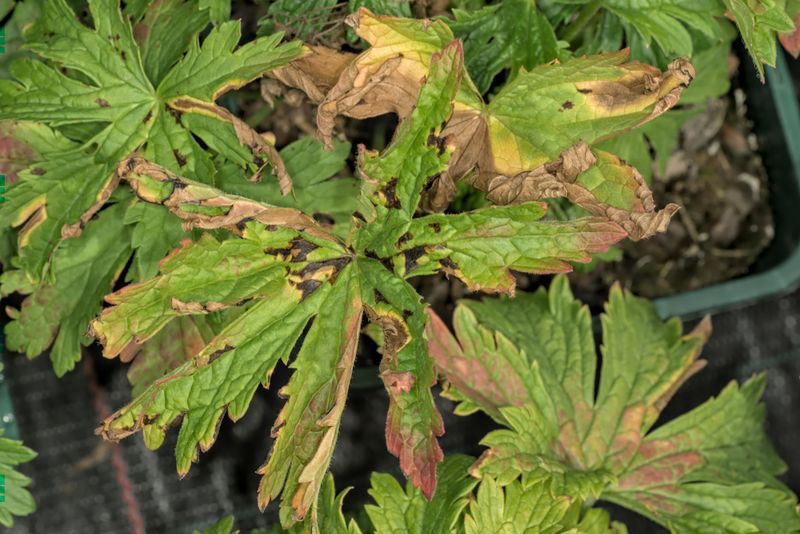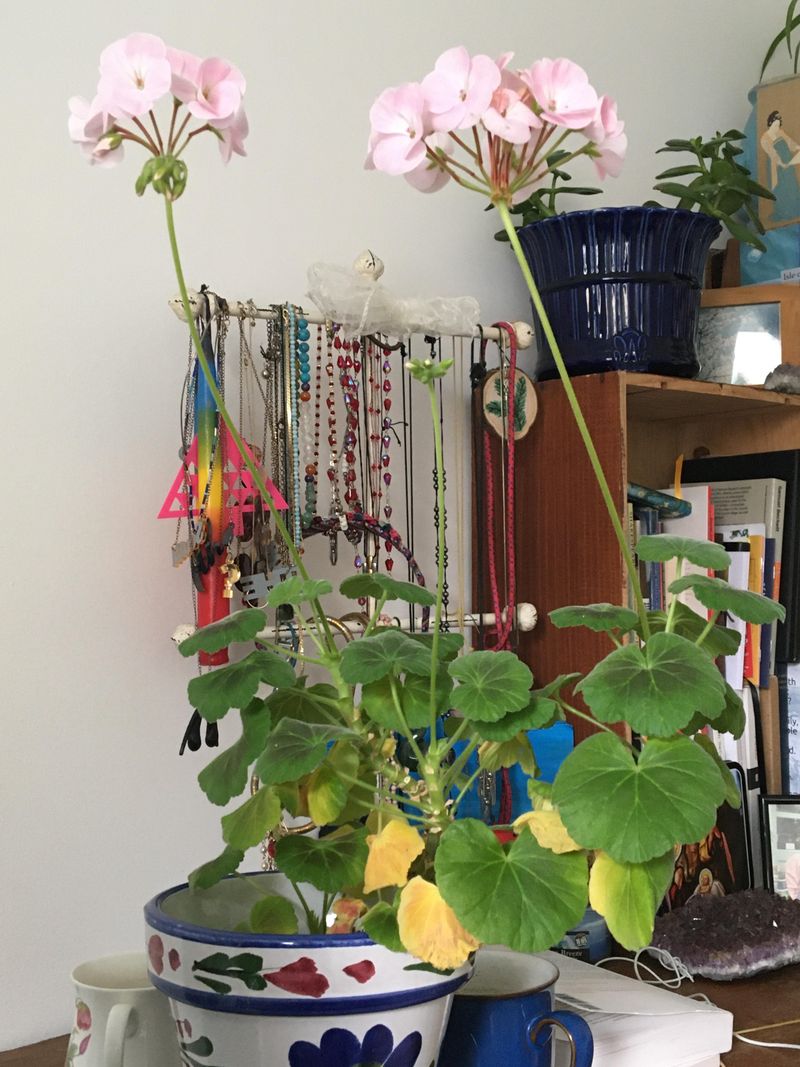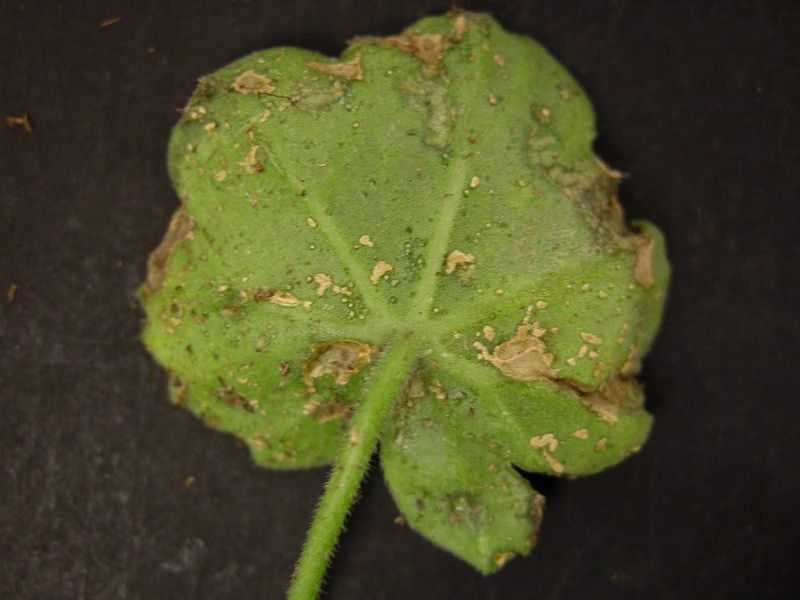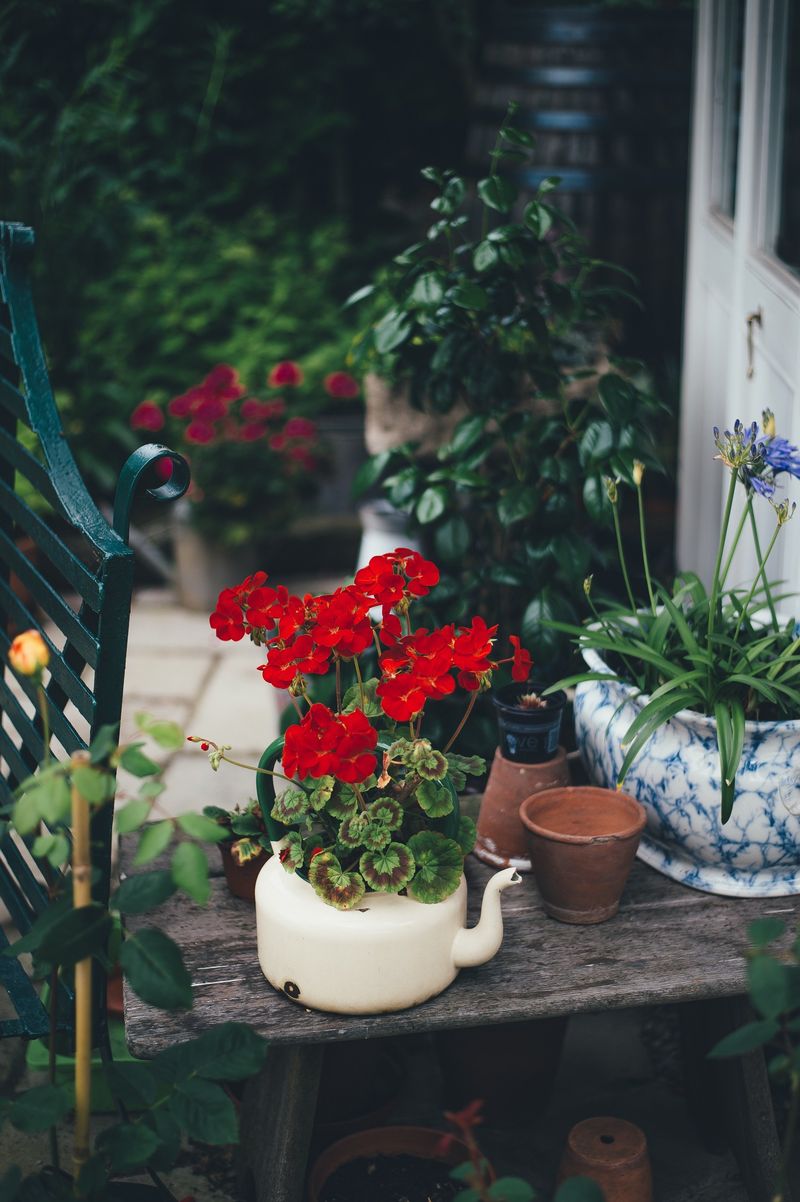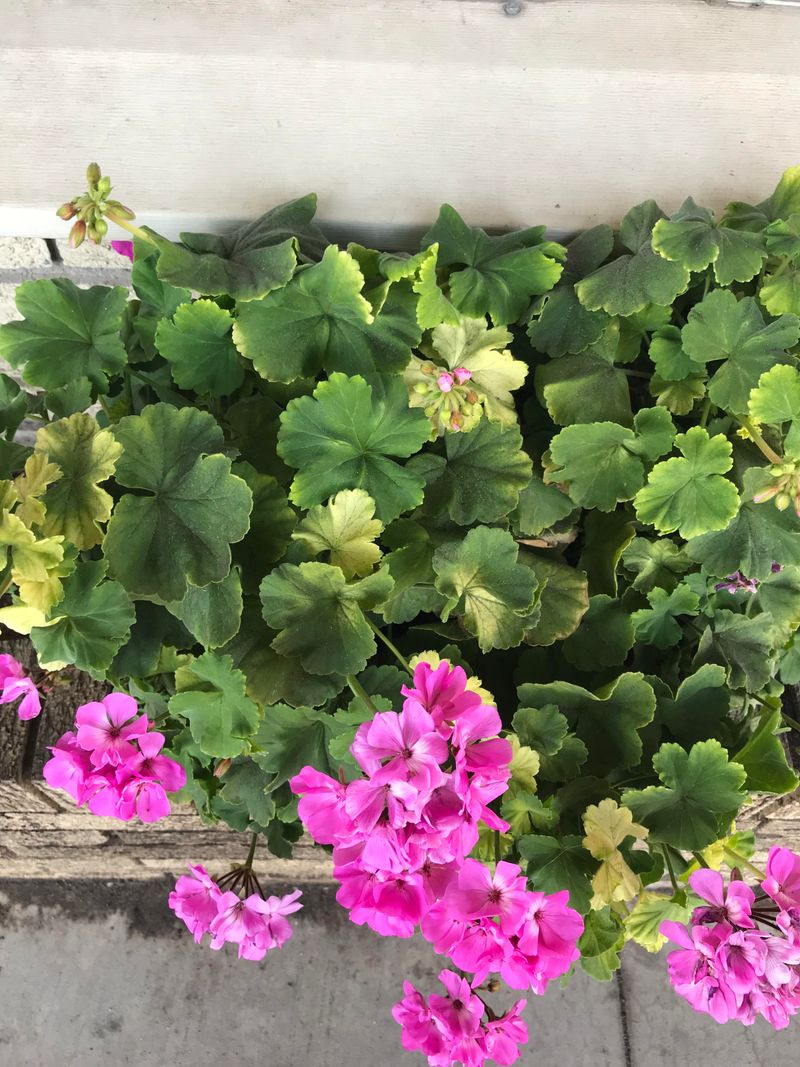Yellow leaves on your geraniums? Don’t panic—they’re trying to tell you something. From overwatering to hidden pests, there are plenty of sneaky reasons your plants may be looking a little sick.
This guide breaks down 15 common causes and shows you exactly how to fix them fast—so your geraniums stay lush, vibrant, and blooming strong.
1. Overwatering Woes
Soggy soil is a geranium’s worst enemy. When you water too frequently or don’t allow proper drainage, roots become waterlogged and can’t deliver nutrients properly to the leaves.
Check the soil moisture by sticking your finger an inch deep – if it feels wet, hold off watering. Allow the top inch of soil to dry out between waterings, and ensure your pots have drainage holes.
Consider repotting if the soil stays waterlogged, using a well-draining potting mix with some perlite or sand mixed in.
2. Nutrient Deficiency
Yellow leaves with green veins often point to an iron deficiency, while overall yellowing might indicate nitrogen problems. Geraniums are hungry plants that deplete soil nutrients quickly.
Feed your geraniums with a balanced fertilizer specifically formulated for flowering plants. For iron deficiency, try an iron supplement or foliar spray that can be quickly absorbed through the leaves.
Maintain a regular feeding schedule during the growing season – typically every 2-3 weeks from spring through fall.
3. Underwatering Stress
Parched geraniums will protest with yellowing leaves that eventually turn crispy and brown at the edges. Unlike some drought-tolerant plants, geraniums need consistent moisture.
Develop a regular watering routine based on your climate and pot size. During hot weather, you might need to water every 2-3 days, while cooler conditions require less frequent watering.
Morning watering gives plants time to absorb moisture before the heat of the day, reducing stress on the plant.
4. Pest Invasion
Tiny invaders like aphids, whiteflies, or spider mites suck the life from geranium leaves, causing yellowing as they drain plant juices. Look for sticky residue or fine webbing as telltale signs.
Treat mild infestations by spraying plants with a strong stream of water to dislodge pests. For more serious cases, insecticidal soap or neem oil offers effective control without harsh chemicals.
Regularly inspect the undersides of leaves where pests often hide, and quarantine new plants before introducing them to your collection.
5. Fungal Diseases
Geraniums are susceptible to fungal problems like leaf spot or rust, which create yellow patches that may turn brown or develop spore-filled pustules. Humid conditions and poor air circulation make matters worse.
Prune affected leaves immediately and dispose of them in the trash, not your compost. Space plants properly to improve air circulation, and avoid overhead watering which can splash fungal spores.
Apply a fungicide labeled for ornamental plants if the problem persists, following package directions carefully.
6. Temperature Extremes
Geraniums thrive in moderate temperatures between 65-75°F (18-24°C). Cold drafts or hot, direct sun can shock your plant, causing yellow leaves as it struggles to adapt.
Move indoor geraniums away from heating vents, air conditioners, or drafty windows. For outdoor plants, provide afternoon shade in hot climates, and bring potted geraniums indoors when temperatures drop below 50°F (10°C).
Sudden temperature changes stress plants most, so gradual transitions work better when moving plants between indoor and outdoor environments.
7. Aging Process
Sometimes yellowing is simply part of the natural aging process. Lower, older leaves yellow and drop as the plant directs energy to new growth.
Don’t panic if a few bottom leaves turn yellow while the rest of the plant looks healthy. Gently remove these aging leaves to keep your plant looking tidy and prevent potential disease harboring.
Focus on maintaining good overall care – proper light, water, and nutrients will help your geranium produce vibrant new growth to replace those aging leaves.
8. Improper Light Conditions
Geraniums need 4-6 hours of direct sunlight daily to thrive. Too little light causes leggy growth and yellowing leaves as the plant struggles to photosynthesize effectively.
Reposition indoor geraniums to your brightest window, ideally south or west-facing. For outdoor plants in shady spots, consider transplanting to a sunnier location or using containers that can be moved to follow the sun.
During winter months when light is scarce, a grow light can supplement natural light and keep your geraniums healthy.
9. Root Rot Damage
When roots sit in waterlogged soil too long, they begin to rot and turn brown or black instead of healthy white. The plant can’t absorb water or nutrients properly, leading to yellowing leaves.
Carefully remove your geranium from its pot and inspect the roots. Trim away any mushy, dark roots with clean scissors, and repot in fresh, well-draining soil.
Allow the plant to recover in bright, indirect light, and water sparingly until new growth appears, indicating your rescue efforts have succeeded.
10. Poor Soil Quality
Garden soil or old potting mix can become compacted, depleted of nutrients, or develop improper pH levels over time. Yellowing leaves might indicate your geranium is struggling in poor-quality soil.
Repot your geranium every 1-2 years with fresh potting mix designed for flowering plants. The ideal soil for geraniums is slightly acidic to neutral (pH 6.0-7.0) and rich in organic matter.
Add a handful of compost to rejuvenate existing soil between repottings, providing a boost of natural nutrients and beneficial microorganisms.
11. Viral Infections
Unlike fungal or bacterial problems, viral infections in geraniums can’t be cured. Symptoms include yellow mottling or rings on leaves, stunted growth, and deformed flowers.
Unfortunately, infected plants should be removed and destroyed to prevent spreading the virus to healthy plants. Clean your gardening tools with a 10% bleach solution after handling infected plants.
Purchase new geraniums from reputable sources, and always inspect plants for signs of disease before bringing them home to your garden or indoor collection.
12. Transplant Shock
Recently moved geraniums often display yellowing leaves as they adjust to their new environment. The stress of root disturbance, different light conditions, or temperature changes can temporarily weaken plants.
Be patient and provide consistent care after transplanting. Avoid fertilizing for the first few weeks, as this can further stress recovering roots.
Create a stable environment with consistent watering and protection from extreme conditions until new growth appears, typically within 2-4 weeks after transplanting.
13. Chemical Damage
Exposure to herbicides, household cleaners, or even some tap water treatments can cause yellow spots or entire leaves to yellow. Geraniums are particularly sensitive to chlorine and fluoride in tap water.
Allow tap water to sit out overnight before watering to let chlorine evaporate. Keep plants away from areas where household cleaners are used, and never spray pesticides or herbicides on windy days.
If chemical damage occurs, rinse leaves with clean water and prune severely affected foliage to encourage new, healthy growth.
14. Salt Buildup
White crusty deposits on soil surfaces or pot rims signal excess salt accumulation from fertilizers or mineral-rich water. These salts draw moisture away from roots, causing nutrient deficiencies and yellow leaves.
Flush your potted geraniums thoroughly every few months by watering until excess runs freely from drainage holes – repeat this process 2-3 times in one session to wash away accumulated salts.
Consider using rainwater or filtered water if your tap water is particularly hard, and avoid fertilizing dry plants, which increases the risk of salt burn.
15. Overcrowded Conditions
Geraniums planted too closely compete for water, nutrients, and light. The resulting stress manifests as yellowing leaves, especially on lower or interior portions of crowded plants.
Divide overcrowded plants by gently separating them at the roots and replanting with proper spacing – about 12-18 inches apart for most varieties. For potted geraniums, choose containers that allow 2-3 inches of space around the root ball.
Regular pruning improves air circulation even in tight spaces, reducing disease risk and encouraging balanced growth throughout the plant.

